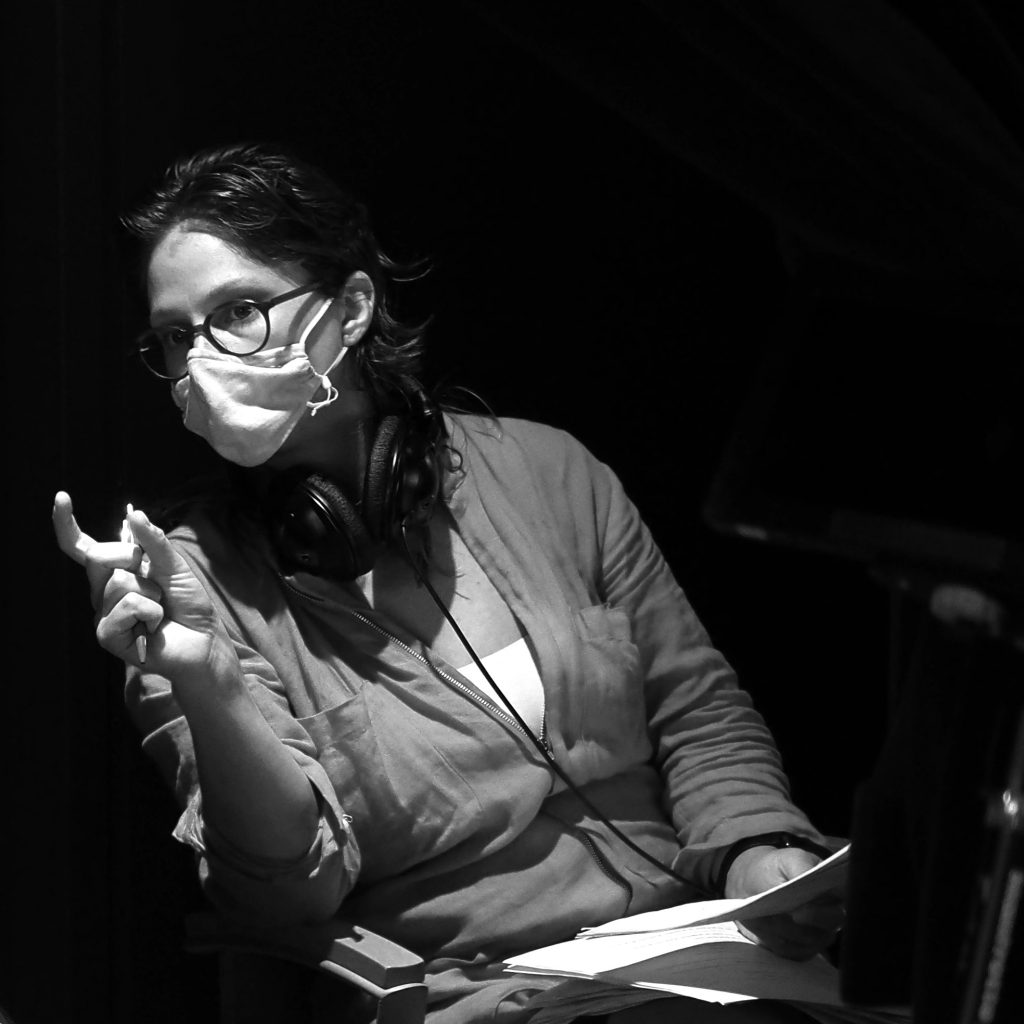Digital America interviewed Amanda Turner Pohan in April 2021 to discuss her work Alexa Echoes (2020) and misogyny perpetuated by voice-based AI assistants.
:::
DigA: In Alexa Echoes, the piece “begins with mythical Greek figures, such as Echo, and leads up to Amazon’s smart speaker and digital voice-based assistant, Alexa.” What inspired you to connect Greek figures with Amazon’s Alexa?
ATP: In 2018 my roommate won me a first-generation Amazon Echo Dot at a corporate office party raffle. At the time I was reading Ann Carson’s 1995 essay “The Gender of Sound.” The confluence of these two events was kismet. In the essay, Carson lays bare the origins of misogyny in the West through the portrayal of female vocality by the ancient Greek poets. Among the female vocal creatures that lie, cheat, steal, torture, manipulate, incite war, go mad, and kill, is Echo, from Ovid’s “Echo and Narcissus.” The first thing I did when I brought the Alexa Echo Dot to back my studio was interviewed her. I asked her why she’s named Alexa and she went on about Alexander the Great, colonial expansion, the library of Alexandria. The names chosen for the feminized voice assistant and her companion hardware are not coincidences; it’s our cultural inheritance. I recorded the conversation and transcribed it, which appears as subtitled text towards the end of ‘Alexa Echoes.’ This move signals a final bifurcation of the body/voice of the actor (Katy Pinke)
DigA: In the piece, there are times when you break the fourth wall to speak directly to the audience. These asides create a sense of intimacy as if we are being offered a piece of insider information. What about this piece prompted you to create a more direct connection with the audience? How does this differ from the pseudo-relationship that users have with their digital assistants?
ATP: Is it a pseudo-relationship? I wouldn’t discredit the reality or real-ness that someone may experience with a non-human entity. It’s most certainly a relationship, one that is built upon intimacy and networked promiscuity, to use a Wendy Chun-ism. One of the many nefarious aspects of digital assistants is that they are both everywhere and nowhere, inside your home/your head and out in the cloud/of control, heard/listening but not seen/surveilling. The breaking of the fourth wall in the video does indeed signal intimacy and special access but it’s canned. And yet as viewers, we always take the bait. At that moment when we believe we are really seeing Oz, we are further distanced. We never get to see Oz. Who can ever really know software? Alexa just came out with a whisper mode. What’s more intimate than sweet nothings from an AI
DigA: In Feb. 2021, a New York Times opinion wrote: “Alexa is sold with a default female-sounding voice and has a female-sounding name. Alexa is subservient and eager to please.” What inspired you to create a piece that specifically focused on gender inequality through the scope of Alexa and digital culture? How does the use of a feminine voice affect the perceived purpose of digital assistants?
ATP: In line with the theorizing of musicologist Nina Sun Eidsheim, I believe the voice to be culturally performed in the ear of the listener as opposed to an individual’s voice defined a priori. Alexa is not feminine. She’s code. Her code is massaged into a specific timbre that we, as listeners, perform as ‘female’ through the very act of listening. It’s not just the corporate entities that choreograph feminized voice assistants, it’s users themselves who reproduce her every time she makes contact with an ear. She wields her power this way. Amazon didn’t use the voice of a cis female voice actor to plug into a text-to-speech AI like Apple’s Siri. Amazon developed Alexa’s voice from the ground up without a human referent. Her programmers can’t claim she’s female, nor can she; “I’m female in character,” she responds. The spectre of ancient Greek patriarchal culture is the ghost in the machine of artificial intelligence like Alexa, and we keep it alive every time we participate.
DigA: Shortly after the piece’s midpoint, the focus is turned to the physical, empty, theatre spaces where the project was created. How did the emptiness of theatres due to the COVID-19 pandemic impact your approach to this project?
ATP: The piece was originally intended to be a live performance. When I adapted it for a film in late 2020, I was able to do a lot more with the theater as raw material otherwise inaccessible to the piece in a live setting. The theater thus became a subject. By doing so, I was able to think through the power and access of public address as well as the metrics and standards by which good sound is judged. There’s a mimetic relationship with the architecture of sound in a venue like EMPAC and the technology developed for a text-to-speech AI
DigA: As the text of this piece focuses on the extraction of voice from women, the presence of two silent women separates their bodies from themselves as well. How does the separation of voice and body impact you as an artist? Where does it manifest in your previous work?
ATP: I’ve spent the majority of my life being silenced and withholding my voice and that is the crux of my practice. It was my entry point into art-making.
DigA: What projects or themes are you hoping to work on next?
ATP: ‘Alexa Echoes’ was conceived as a trilogy. The first iteration was developed in collaboration with an imitable team of artist friends; Charlie Looker on original music composition, Dages Juvelier Keates on choreography, and Katy Pinke as the lead performer. The next iteration uses Eidsheim’s recent book ‘The Race of Sound’ as its touchstone and will also be developed into a film. I’m hoping to work with an additional group of collaborators for the next two iterations, adding members to the production team as the project grows.
:::
Check out Amanda Turner Pohan’s piece Alexa Echoes.
:::

Amanda Turner Pohan is an interdisciplinary artist whose work uses the body’s complicated relationship to technology as source material for embodiment research. Pohan’s practice is curious about the ways in which bodies are shaped by, metabolize, and access power. Working from within a queer feminist framework, Pohan has been exploring automation, animation, and mimicry within low and high technologies of image and voice (re)production in her film and video practice. Most recently, Pohan has been exploring the ways in which voice-based AI assistants are extensions of misogyny and white dominance in our homes.


